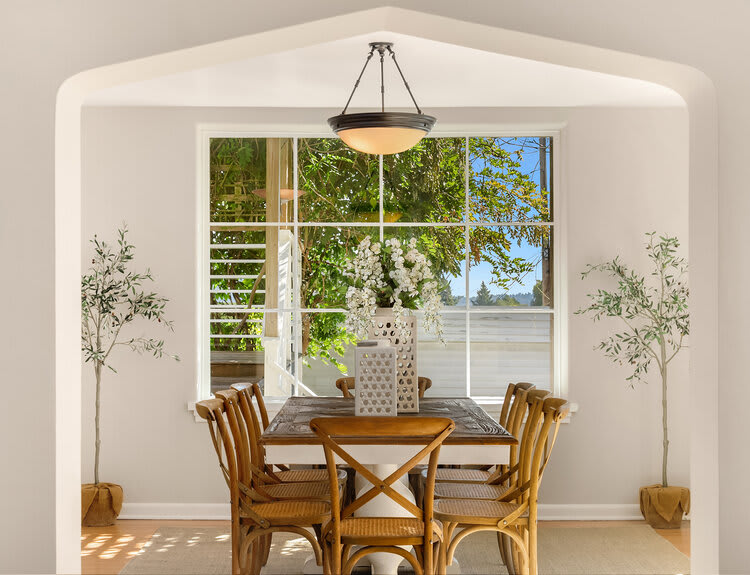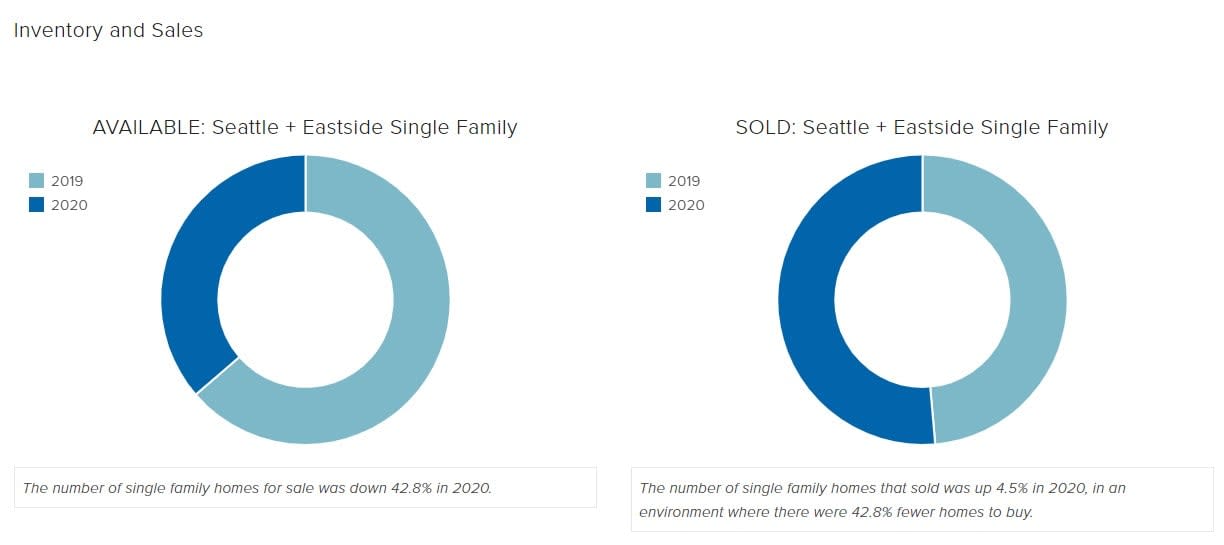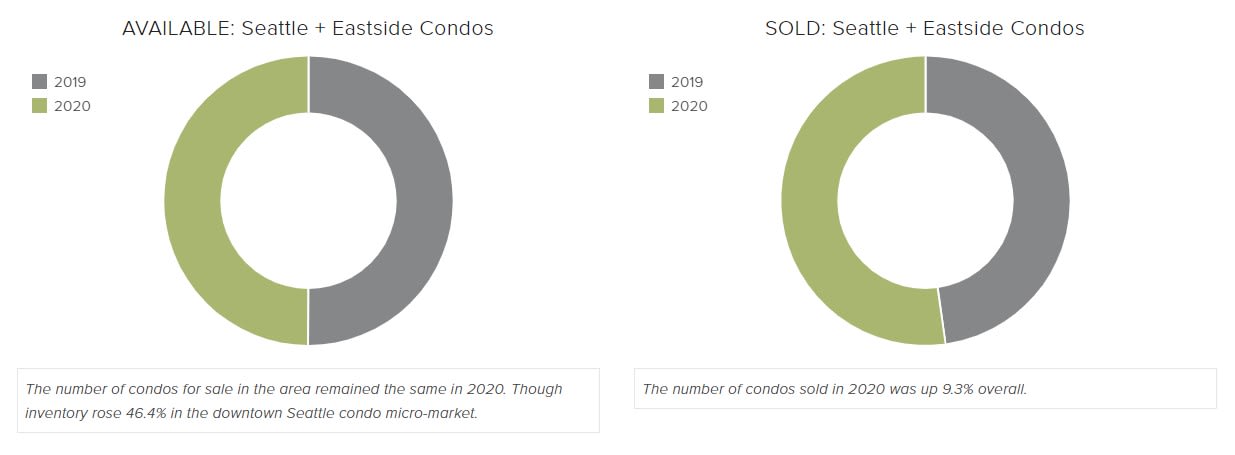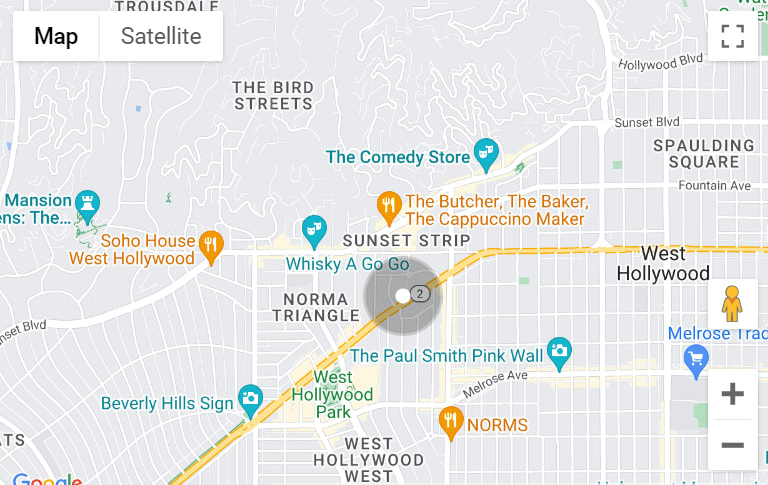
MY FAVORITE SHOT IN THE DINING ROOM OF A QUEEN ANNE LISTING WE JUST SOLD, THAT I HELPED THE SELLERS BUY 20 YEARS AGO.
My quarterly and year-end market reviews are broad and high-level. Drop me a line if you’d like to have me take a closer look at your micro-market segment, or to receive these market updates delivered to your inbox.
I’m very cautious to avoid over-emailing, and only send out communications quarterly. That’s a promise.
For monthly mini-market updates, follow me on Instagram or Facebook!
I post 1-minute videos showing a snapshot of all the key stats each month.
2020 Market Recap
In 2020, a confluence of factors drove inventory down while sales and prices rose, across most (but not all) sectors of our residential markets in the greater Seattle area. These factors were:
COVID-driven dissatisfaction with current homes (no one planned to live, work, and school 24/7 from home, or see neighborhood lifestyle amenities shut down when they first purchased)
Low-interest rates
The growth of the tech sector that so heavily fuels our local economy
The relative security of the high-paying jobs required for people to afford our high-priced regional real estate
The growth of the stock market
This is a completely different tale from the income loss, job insecurity, shuttered small businesses, a spike in homelessness, and other hardships a massive segment of our communities suffered in 2020. There were negative impacts on commercial real estate and the apartment rental markets as a result, but by and large, the residential single-family home sales market escaped these influences. Why? Mainly because area homes are so expensive those most suffering from COVID shut-downs could not afford to be property owners anyway. And those who could want to move.
Condos fared less well than single-family homes, and in some micro-markets (most notably downtown Seattle), they actually suffered a downturn. In what is likely a temporary dip, COVID restrictions made condos and apartments less desirable.
The following data is for properties under $5 million. For information on how the $5 million-plus market is performing, please
contact me. All local market data is from the NWMLS.


Price Trends
Price per square foot for Seattle and Eastside single-family homes rose 9.6% on average in 2020. Eastside condo price per square foot rose 9.4%, while in Seattle condo prices remained essentially flat, with a 0.6% gain. Underlying the Seattle average is a tale of some micro-markets seeing price decreases (downtown and resales), while other areas held steady or appreciated slightly (some new construction, which traditionally commands higher prices per square foot).
Micro-Markets Matter
As always, different neighborhoods, prices, and property categories usually perform differently. Whenever you have a question, need or curiosity about your own situation, please don’t hesitate to reach out.
Looking Forward to 2021

2020 exposed just how illusory our efforts at forecasting are (however much we love the comfort this pastime brings!). The world has too many complex feedback loops to project how things will be.
Having said that, there are certain reasons to expect 2021 will continue to see a strident residential sales market in the Seattle area.
- As I write, interest rates remain below 3% and are not projected to rise much this year.
- Inventory remains at historic low levels.
- The large tech companies that provide so much fuel to our local economy have grown wealthier as a result of the pandemic; these jobs are not at risk. On the contrary, more new hires are being added. (Geek Wire)
- Case-Shiller reports that as of October 2020 (the latest data published), Phoenix, Seattle, and San Diego continued to see the highest year-over-year gains among the US cities in their 20-city index. Phoenix led the way with a 12.7% year-over-year price increase, followed by Seattle with an 11.7% increase and San Diego with an 11.6% increase. The national average was up 8.41%. (S&P CoreLogic)
- From the National Case-Shiller House Price Momentum list, we learn house prices in Seattle increased 9% faster in 2020 than they did in 2019, putting Seattle at the top of the nation’s momentum index. (realestatedecoded)
Much harder to predict is the behavior of the stock market, which typically has a powerful impact on our higher-end home sale markets here. We will be watching this, as well as the new Biden administration’s policies.
Another thing to watch: is the work-from-home policies of our major regional employers, once the vaccine becomes widespread. The more time they require employees to be in the office, the fewer people are likely to move further out from our employment hubs, as some began to do in 2020.
Whatever happens in 2021, you can be assured I stand ready to help you explore, clarify and achieve your own particular real estate goals.




